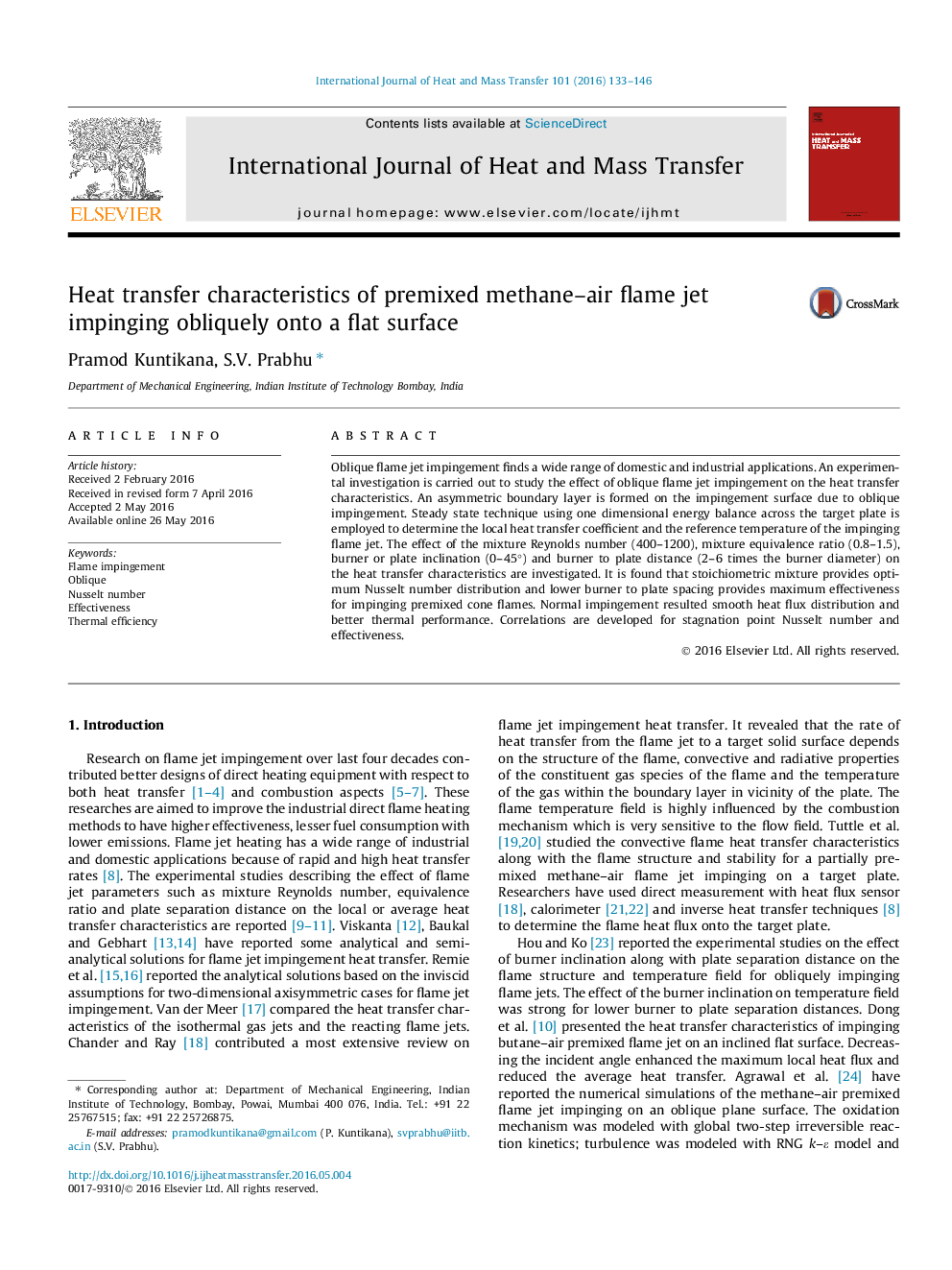| Article ID | Journal | Published Year | Pages | File Type |
|---|---|---|---|---|
| 7055174 | International Journal of Heat and Mass Transfer | 2016 | 14 Pages |
Abstract
Oblique flame jet impingement finds a wide range of domestic and industrial applications. An experimental investigation is carried out to study the effect of oblique flame jet impingement on the heat transfer characteristics. An asymmetric boundary layer is formed on the impingement surface due to oblique impingement. Steady state technique using one dimensional energy balance across the target plate is employed to determine the local heat transfer coefficient and the reference temperature of the impinging flame jet. The effect of the mixture Reynolds number (400-1200), mixture equivalence ratio (0.8-1.5), burner or plate inclination (0-45°) and burner to plate distance (2-6 times the burner diameter) on the heat transfer characteristics are investigated. It is found that stoichiometric mixture provides optimum Nusselt number distribution and lower burner to plate spacing provides maximum effectiveness for impinging premixed cone flames. Normal impingement resulted smooth heat flux distribution and better thermal performance. Correlations are developed for stagnation point Nusselt number and effectiveness.
Related Topics
Physical Sciences and Engineering
Chemical Engineering
Fluid Flow and Transfer Processes
Authors
Pramod Kuntikana, S.V. Prabhu,
